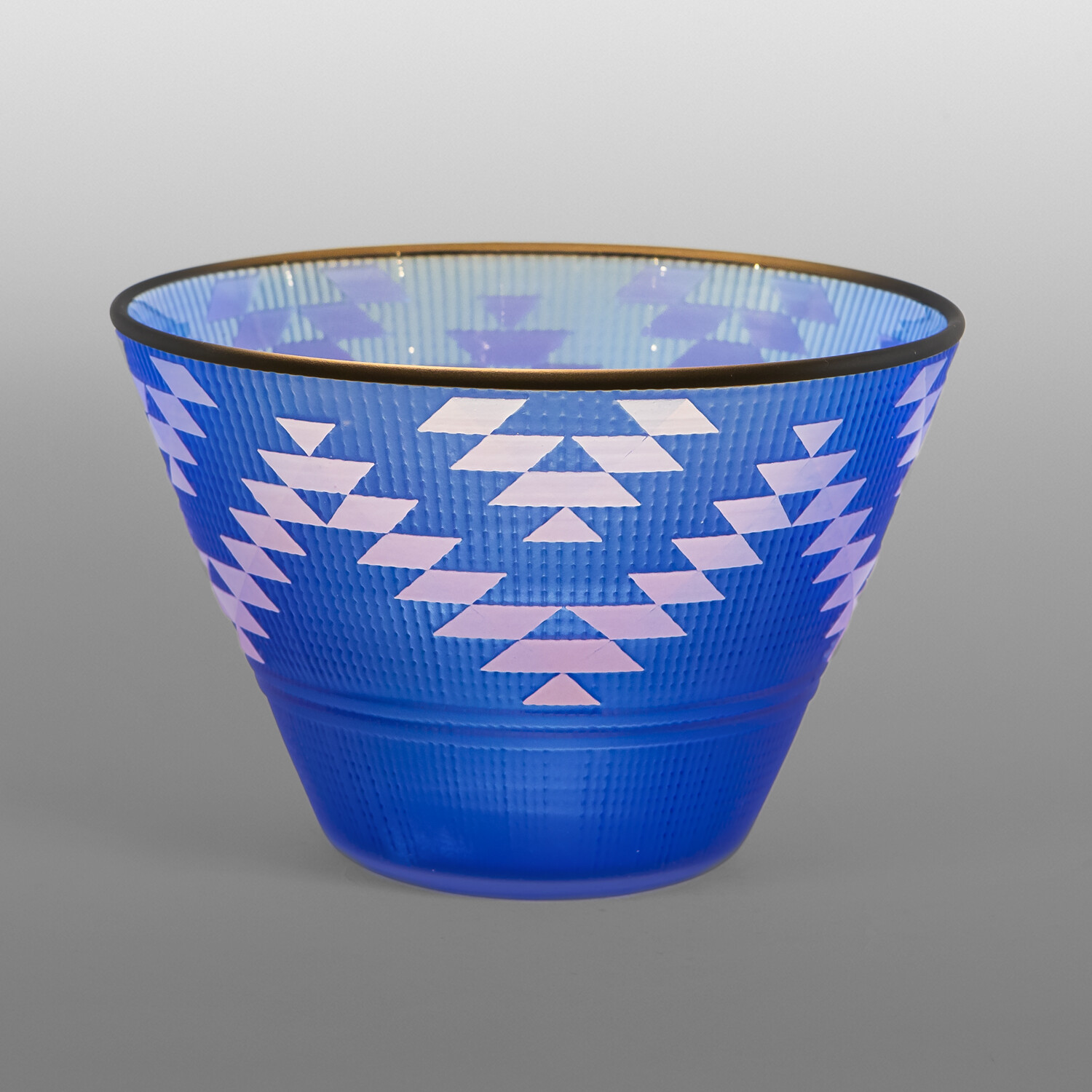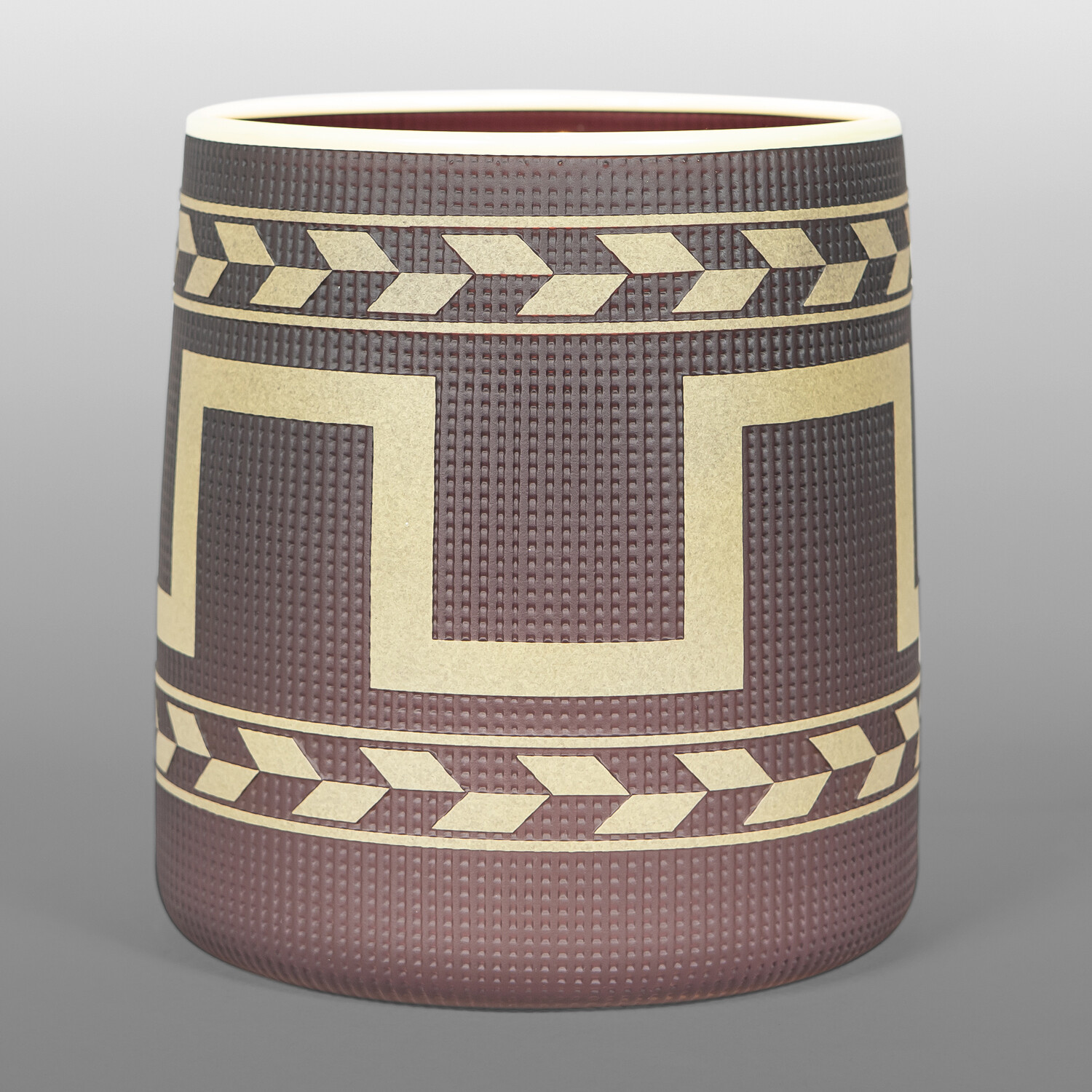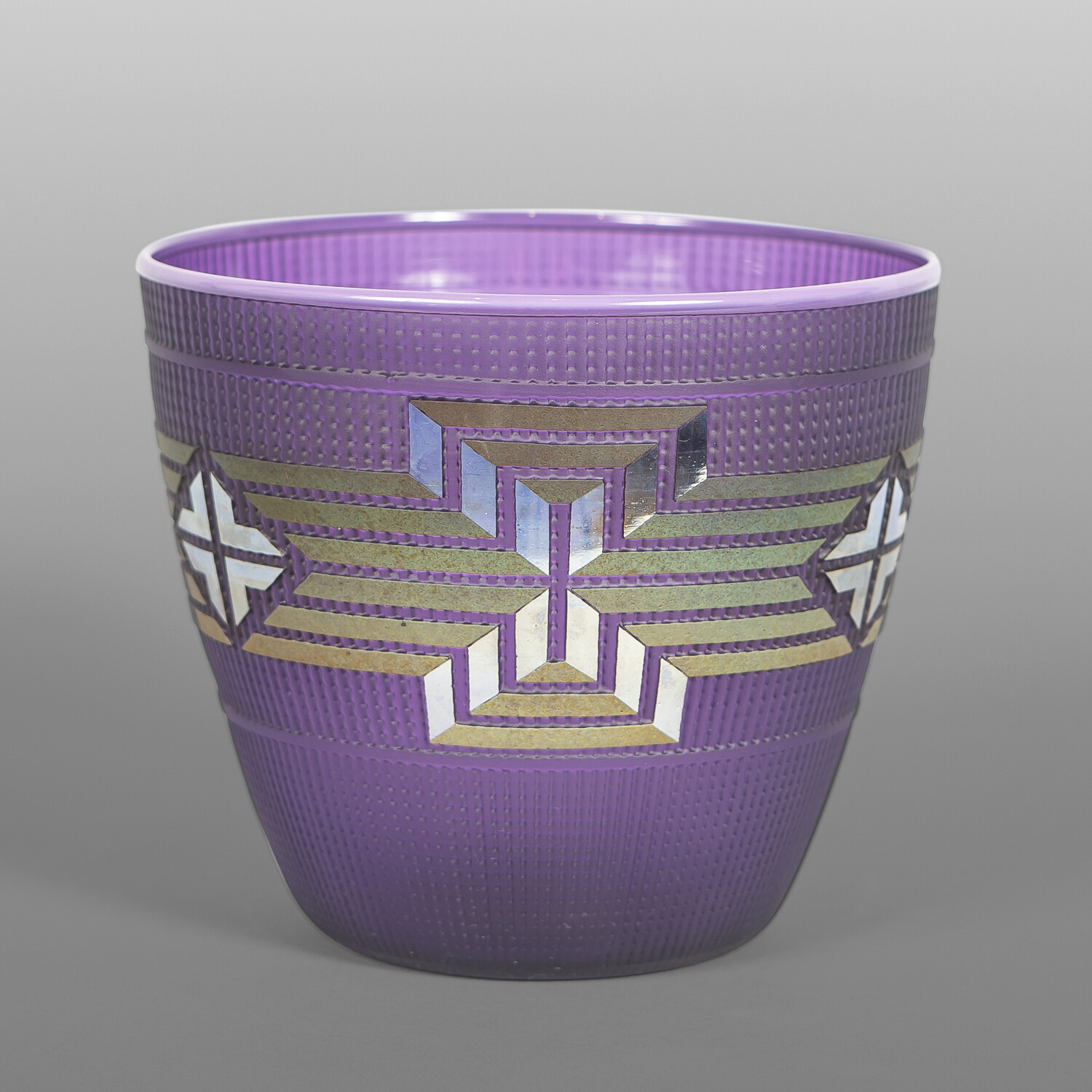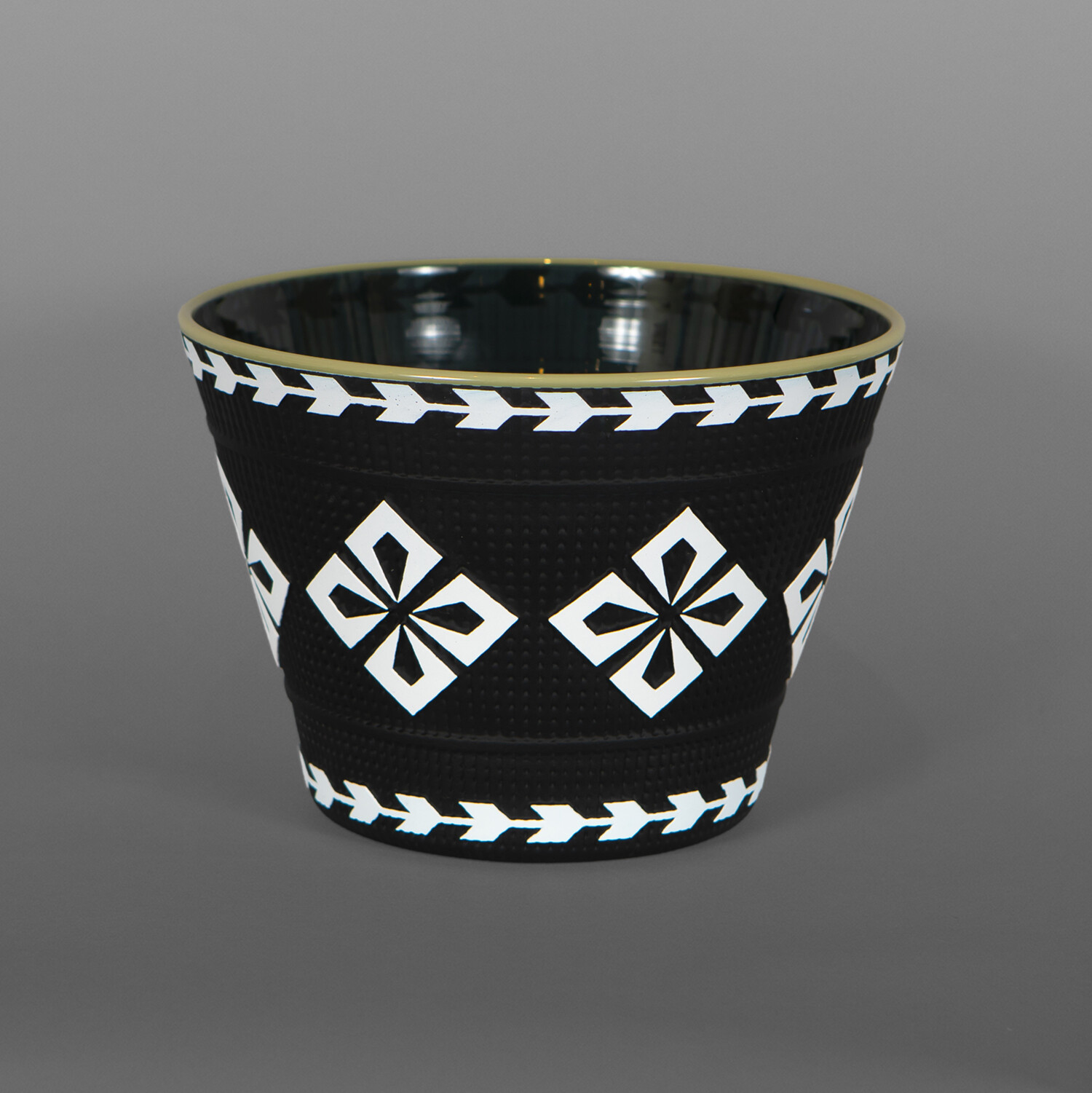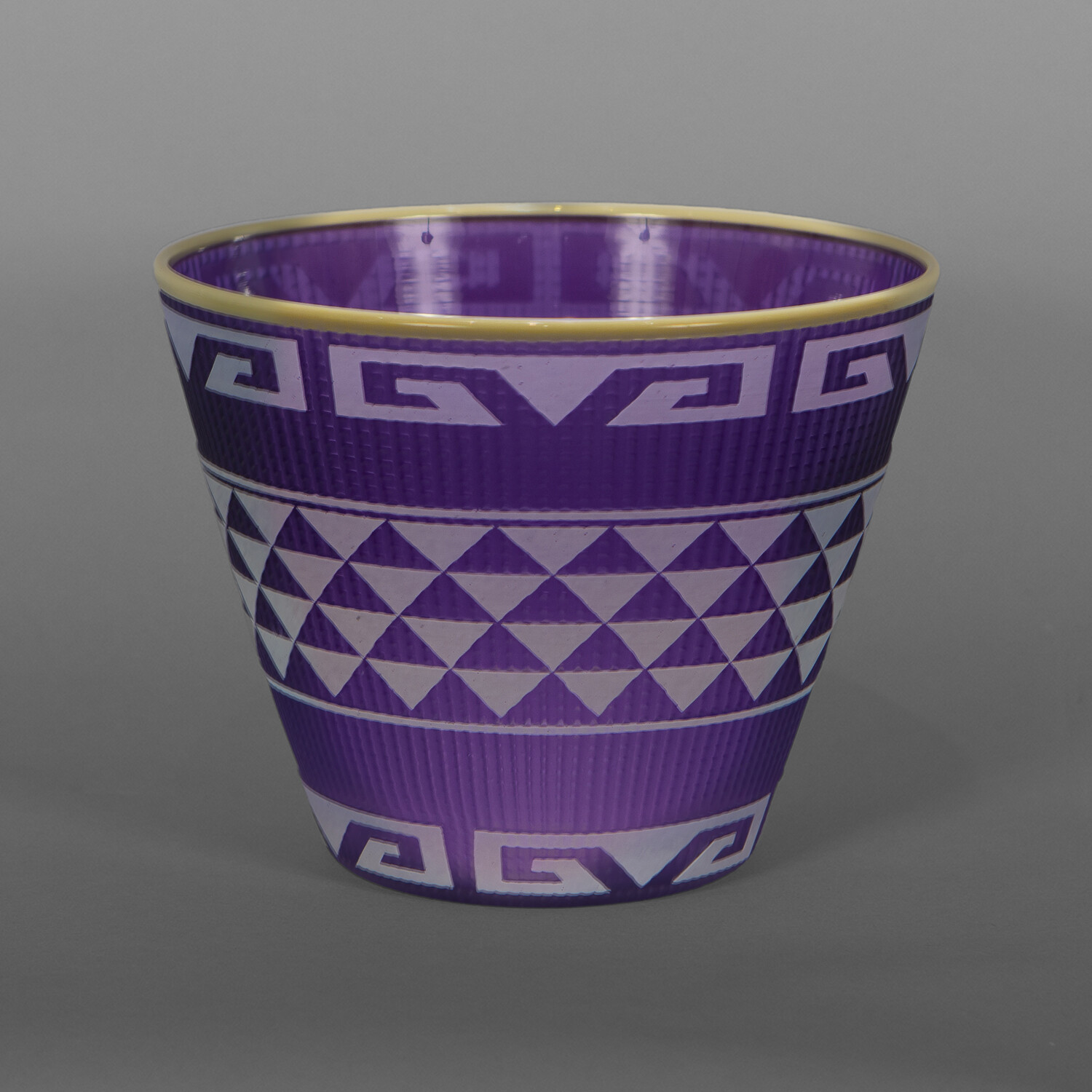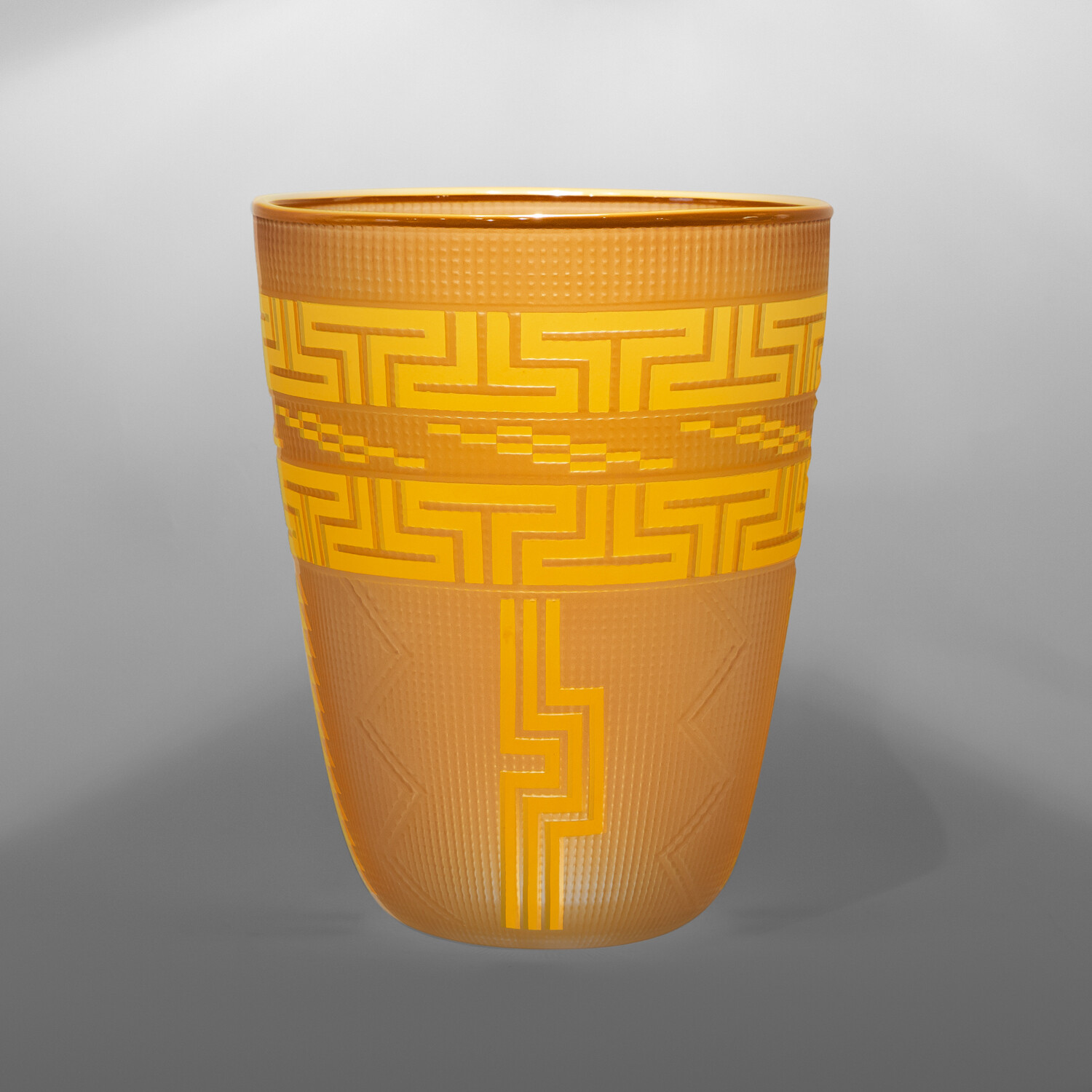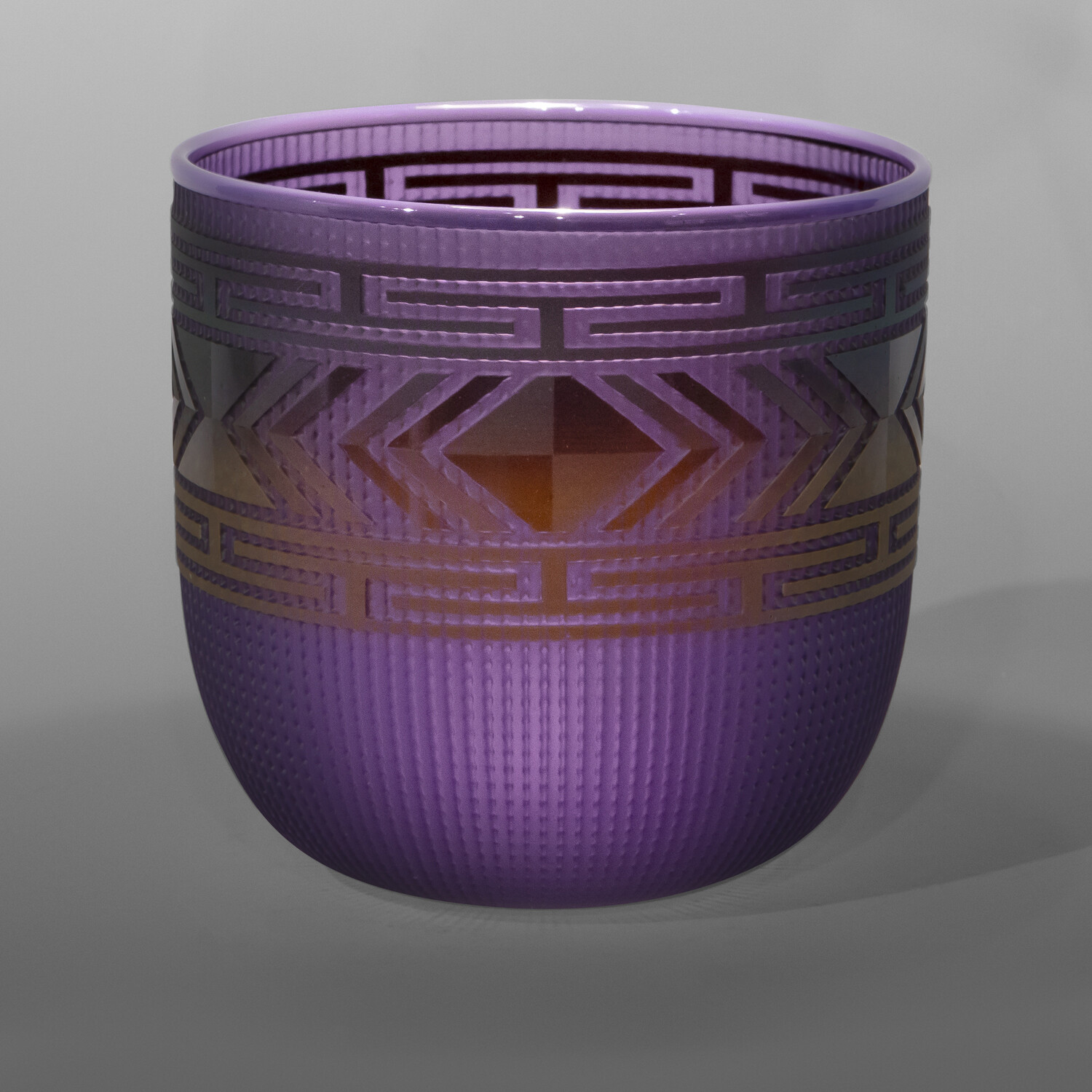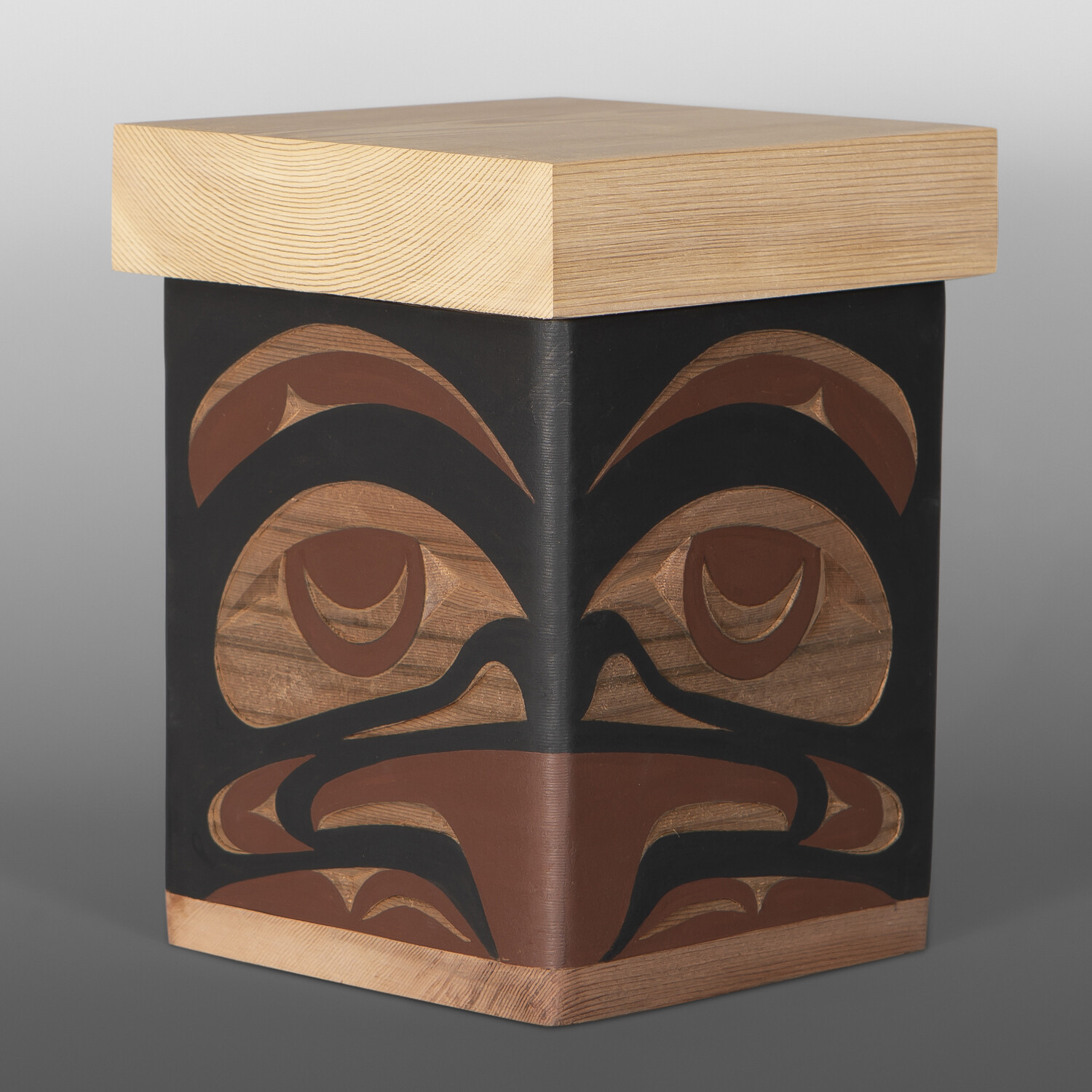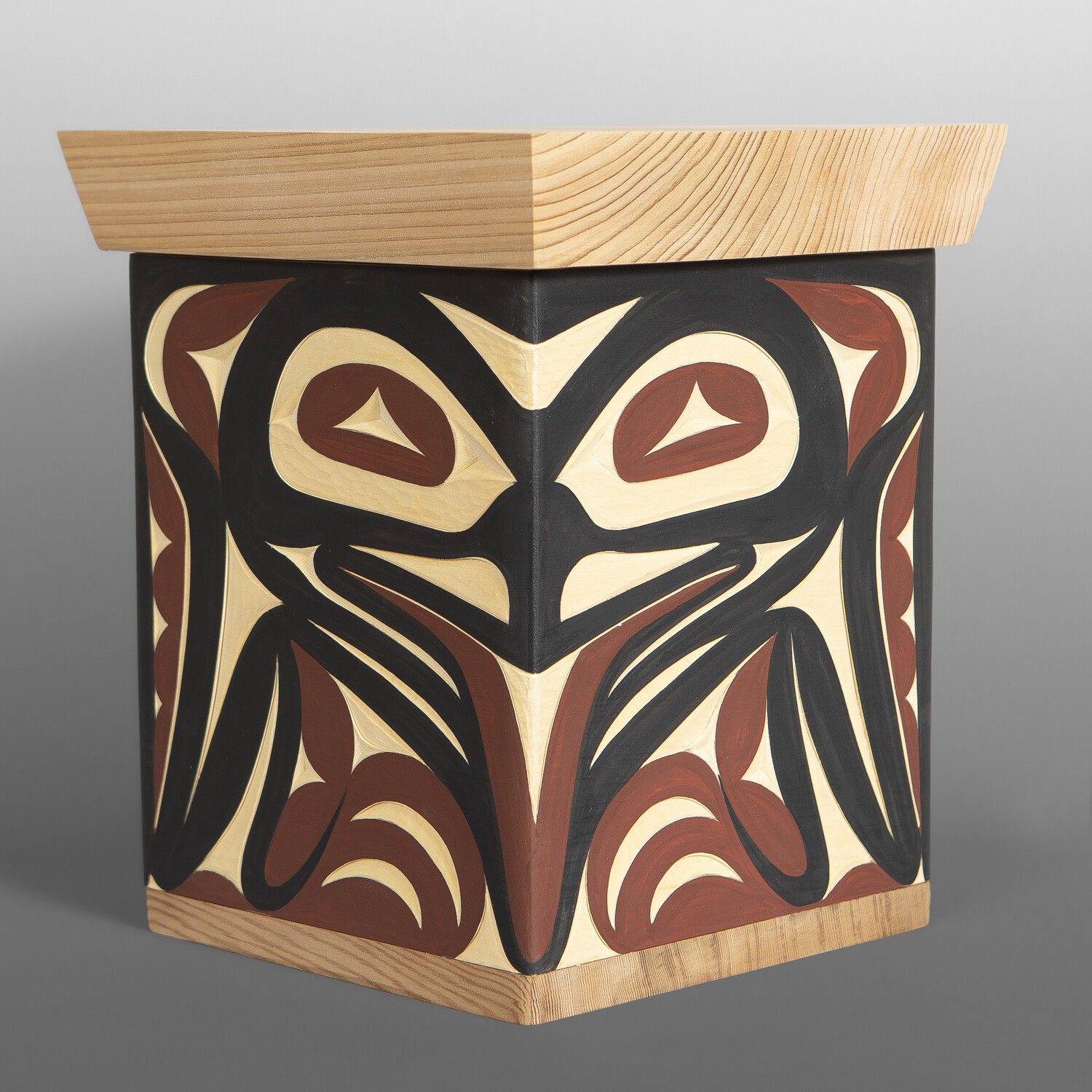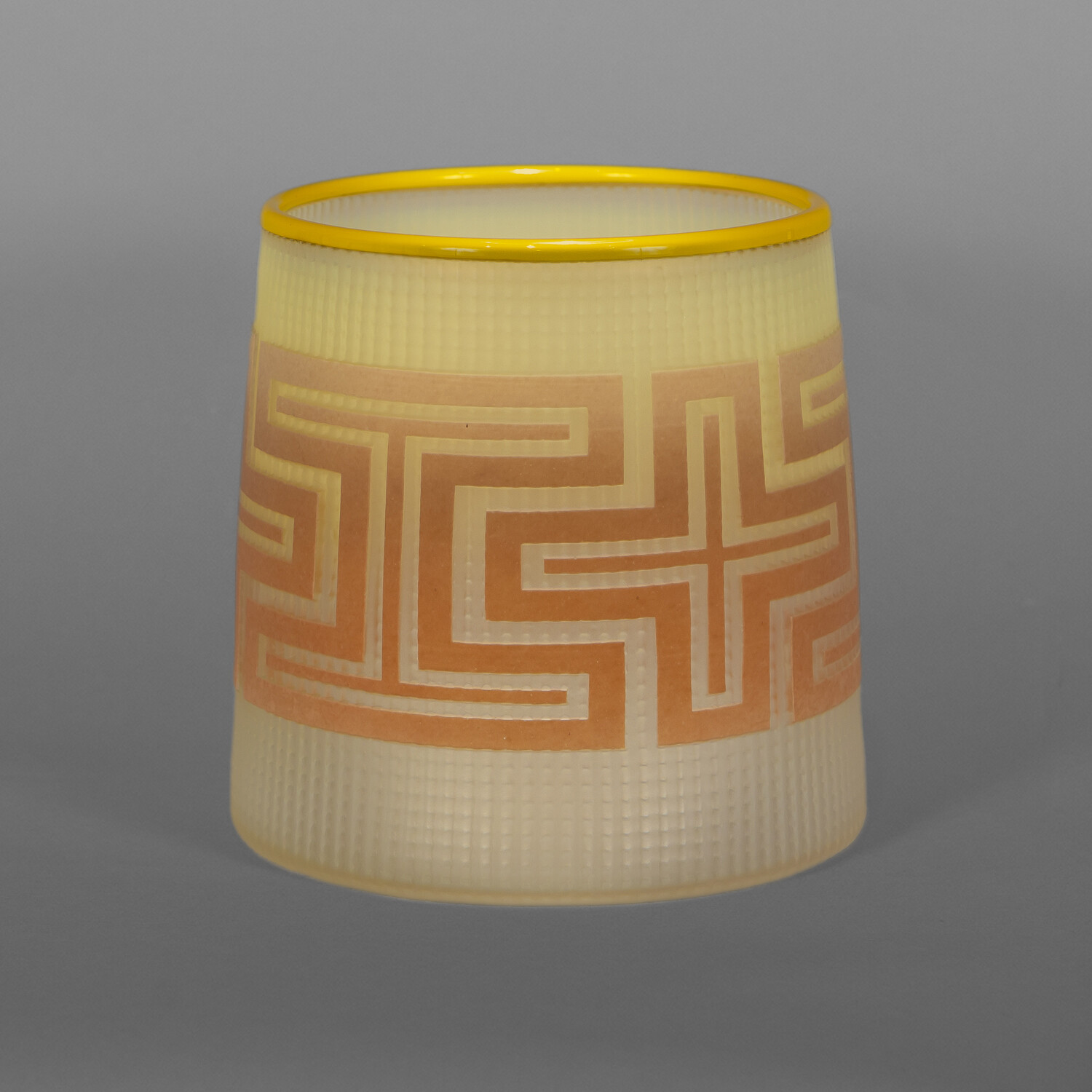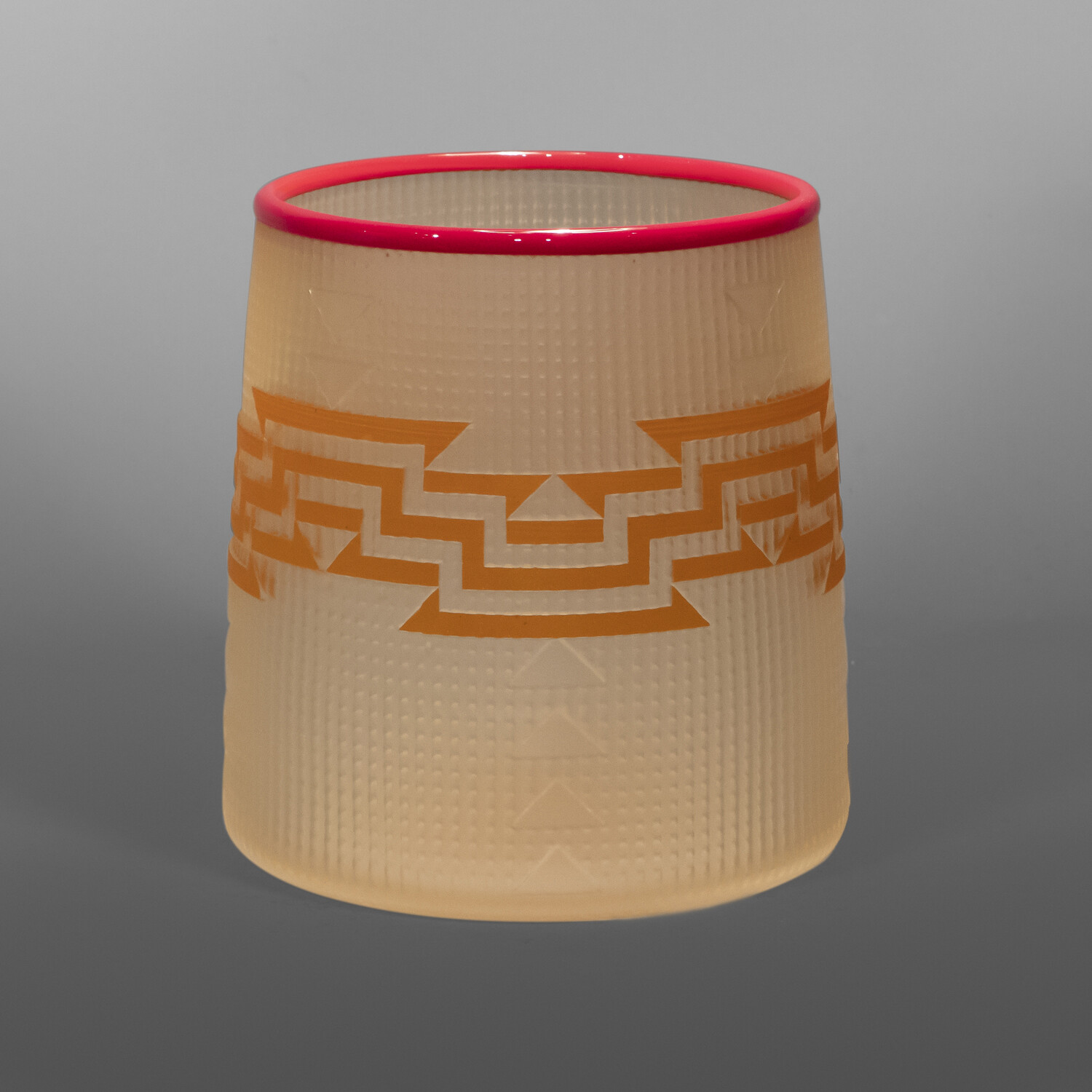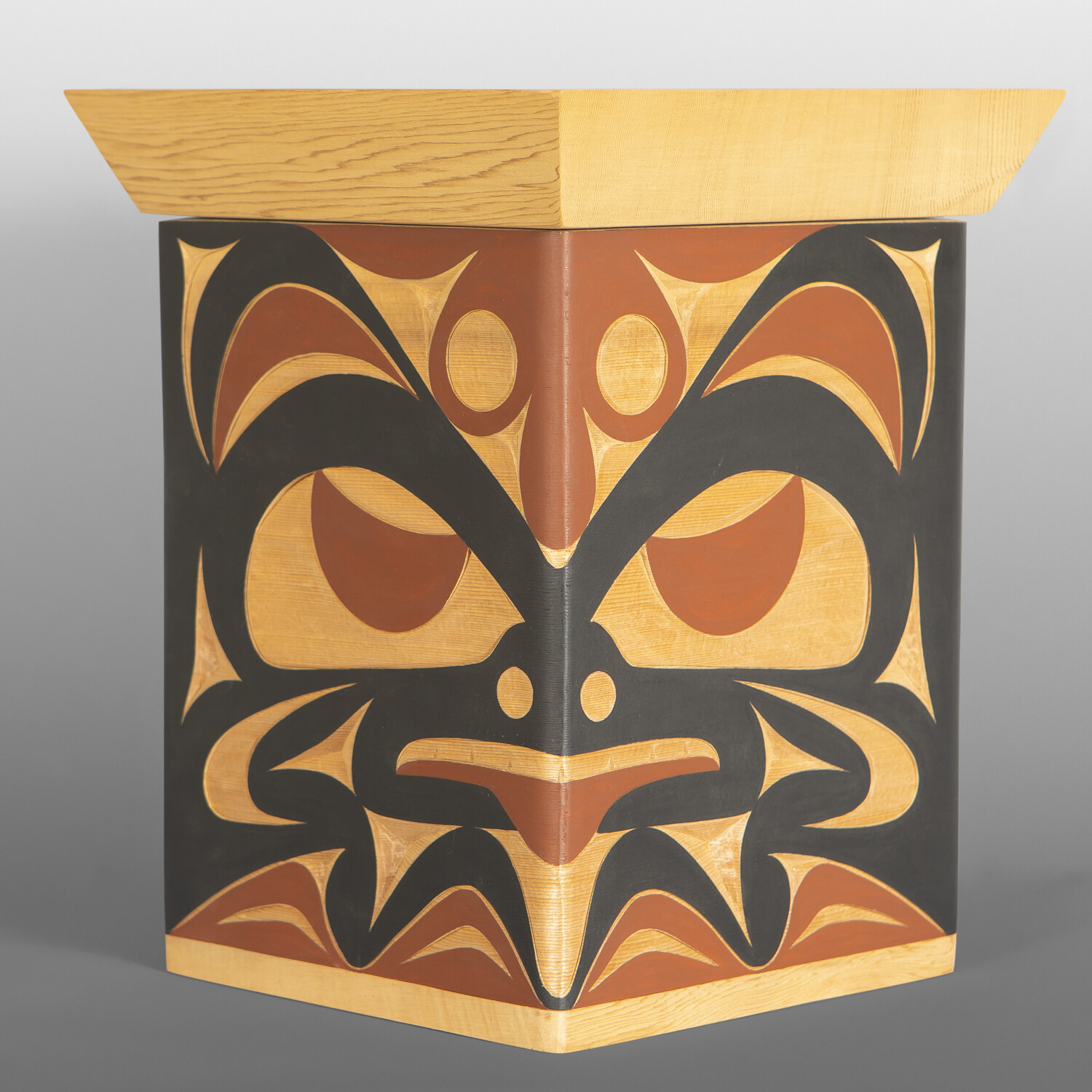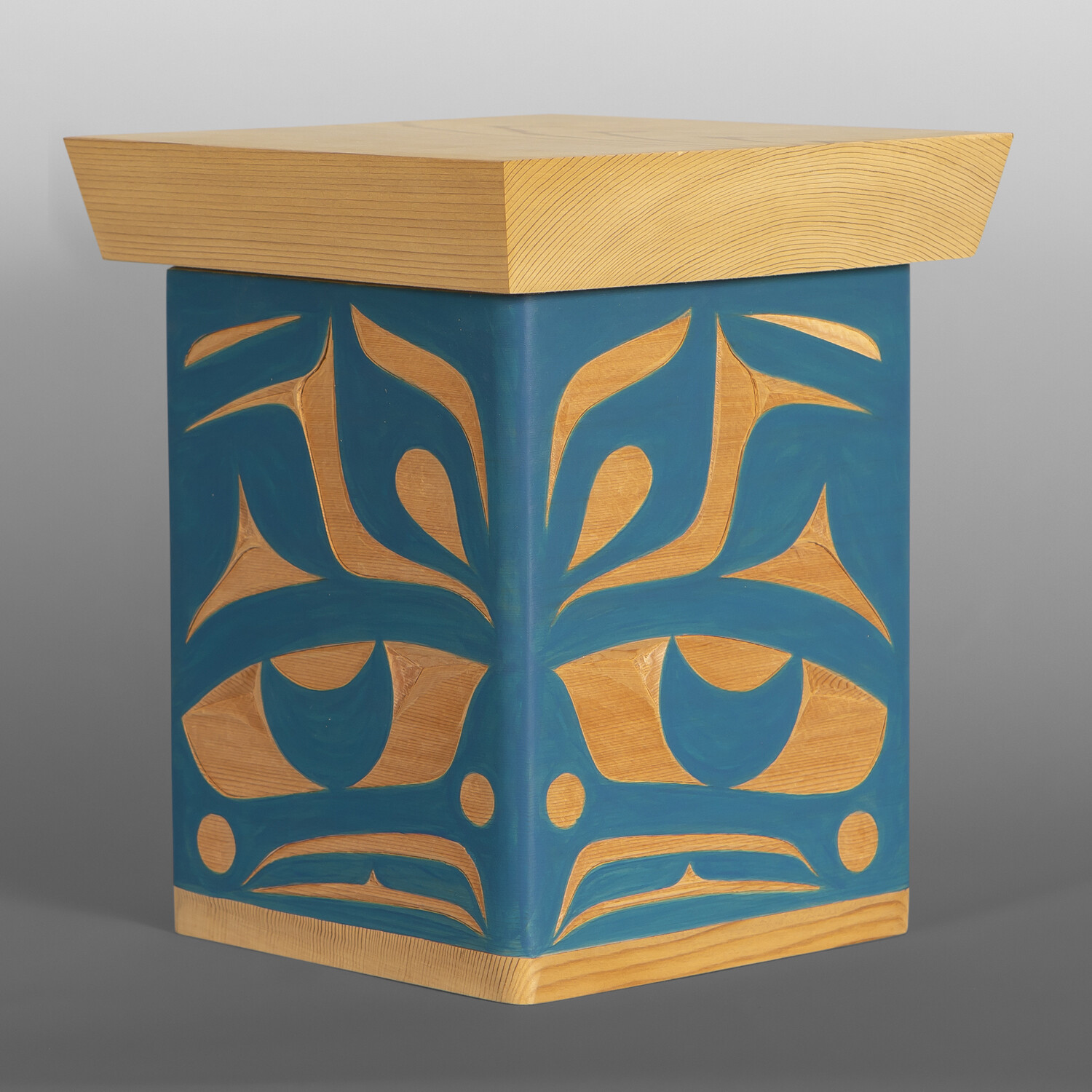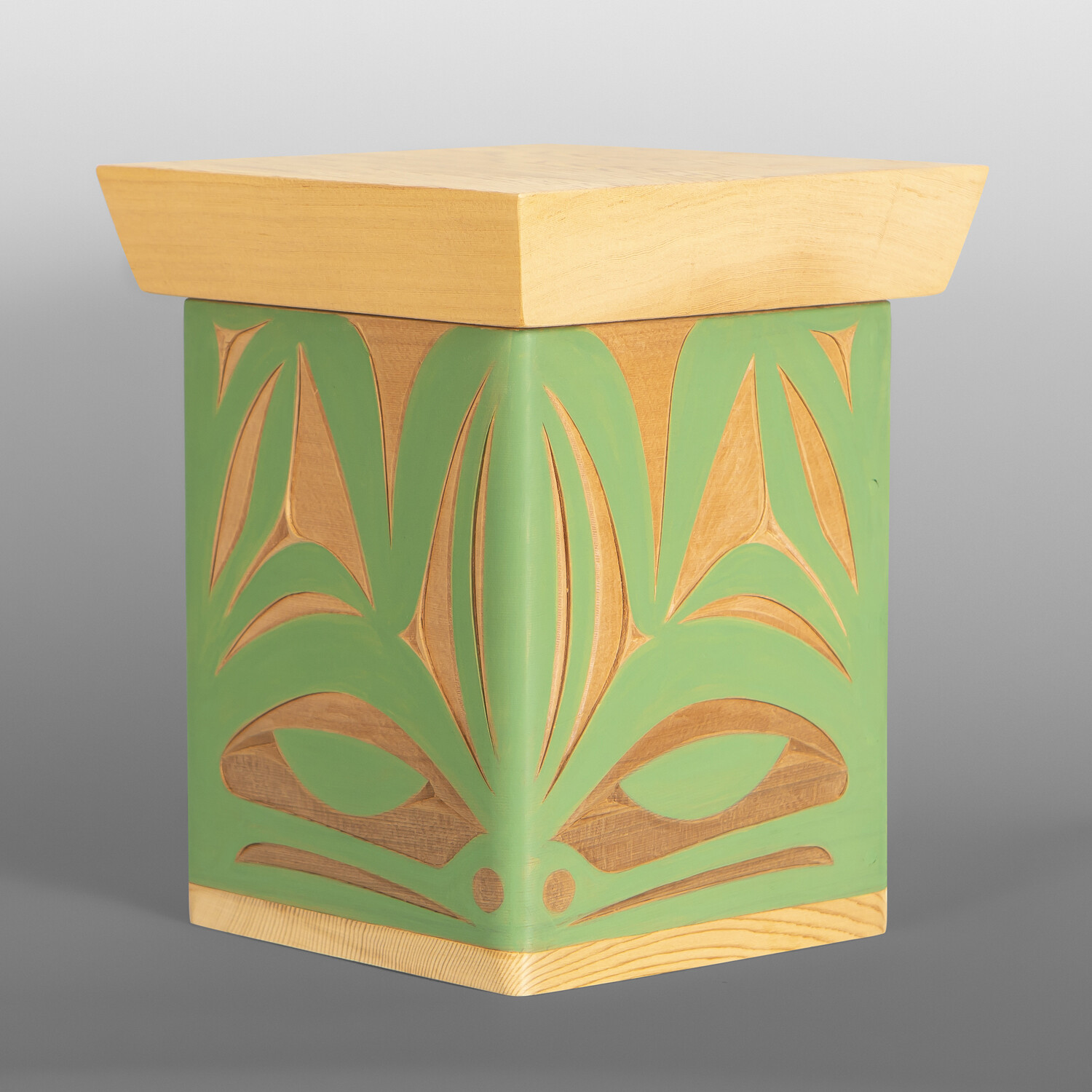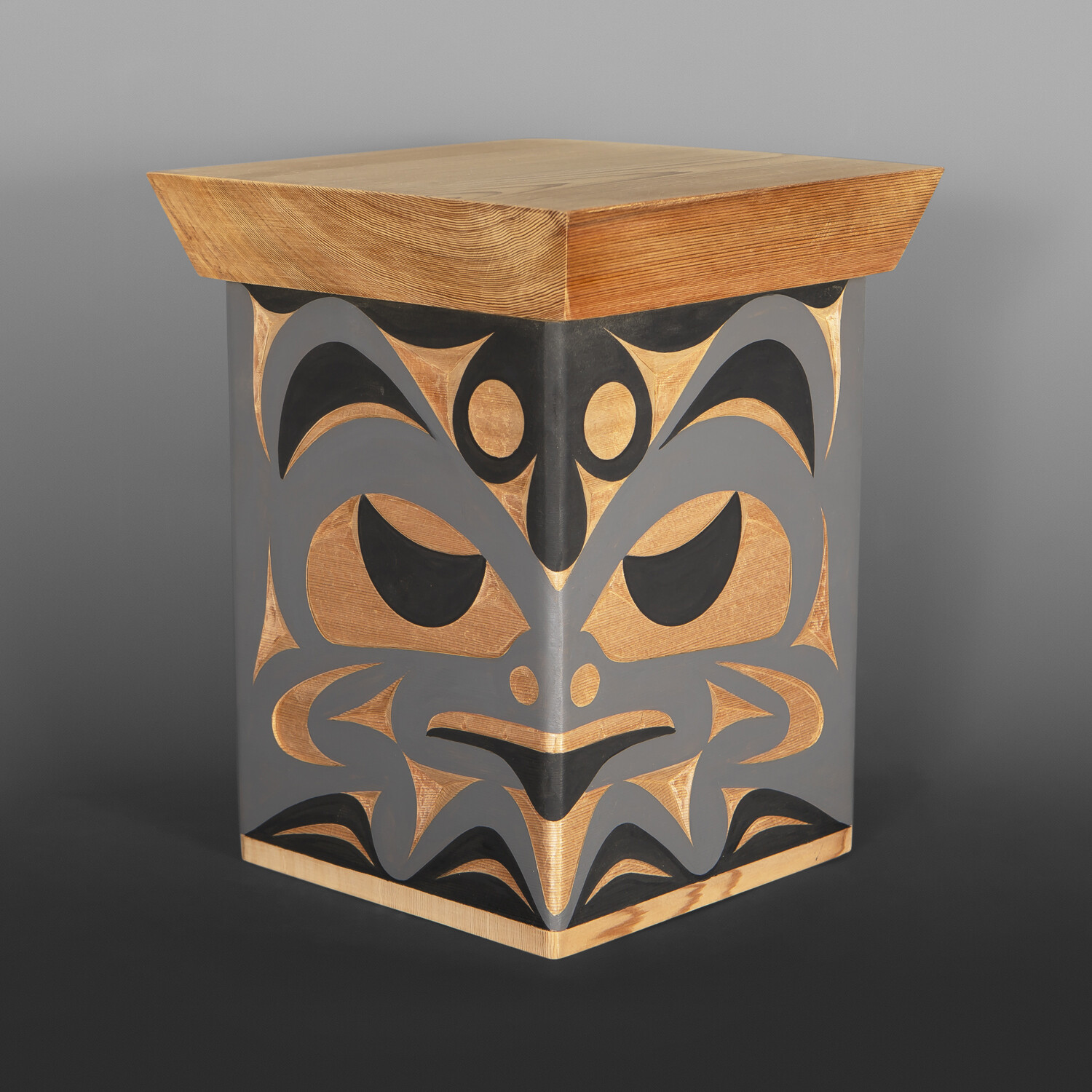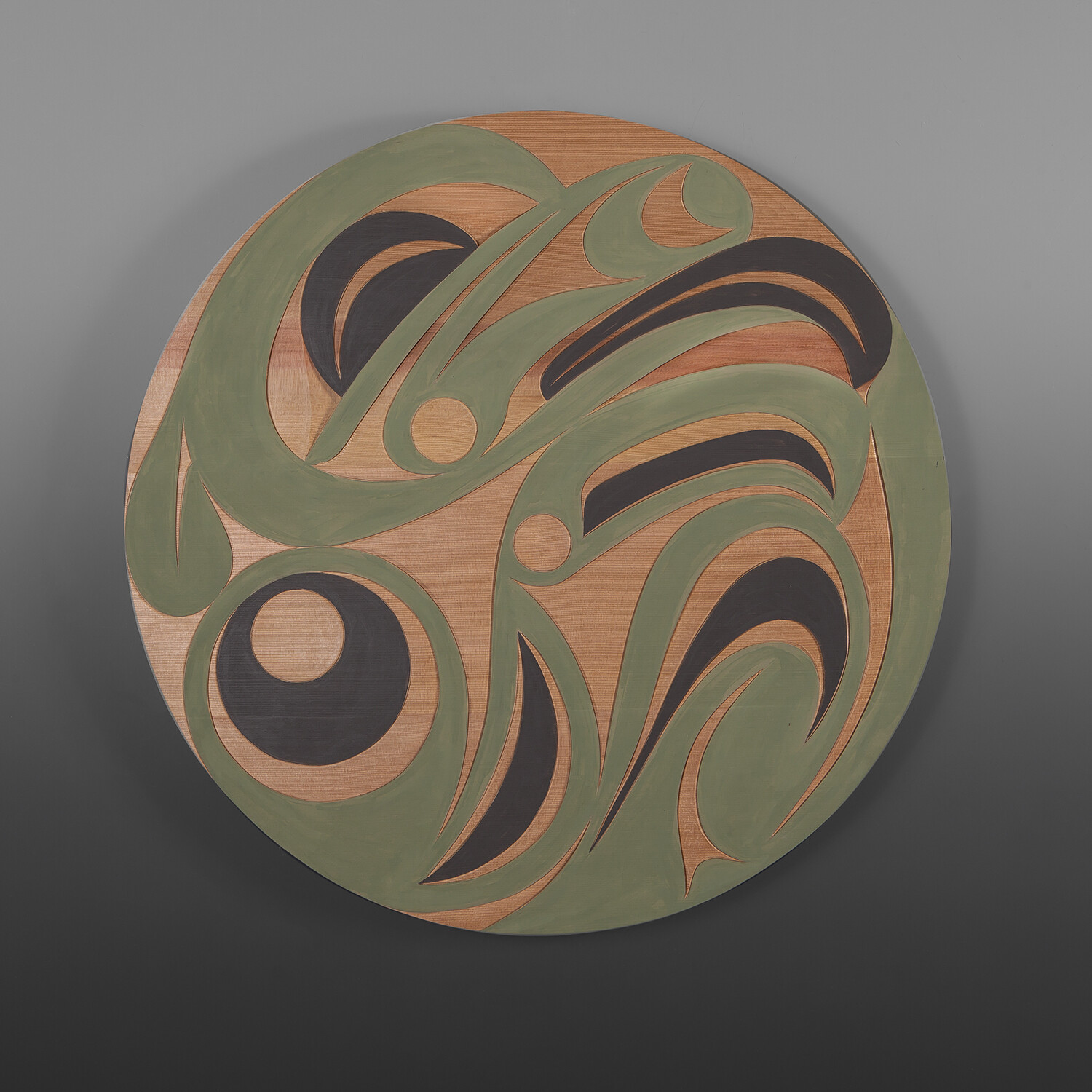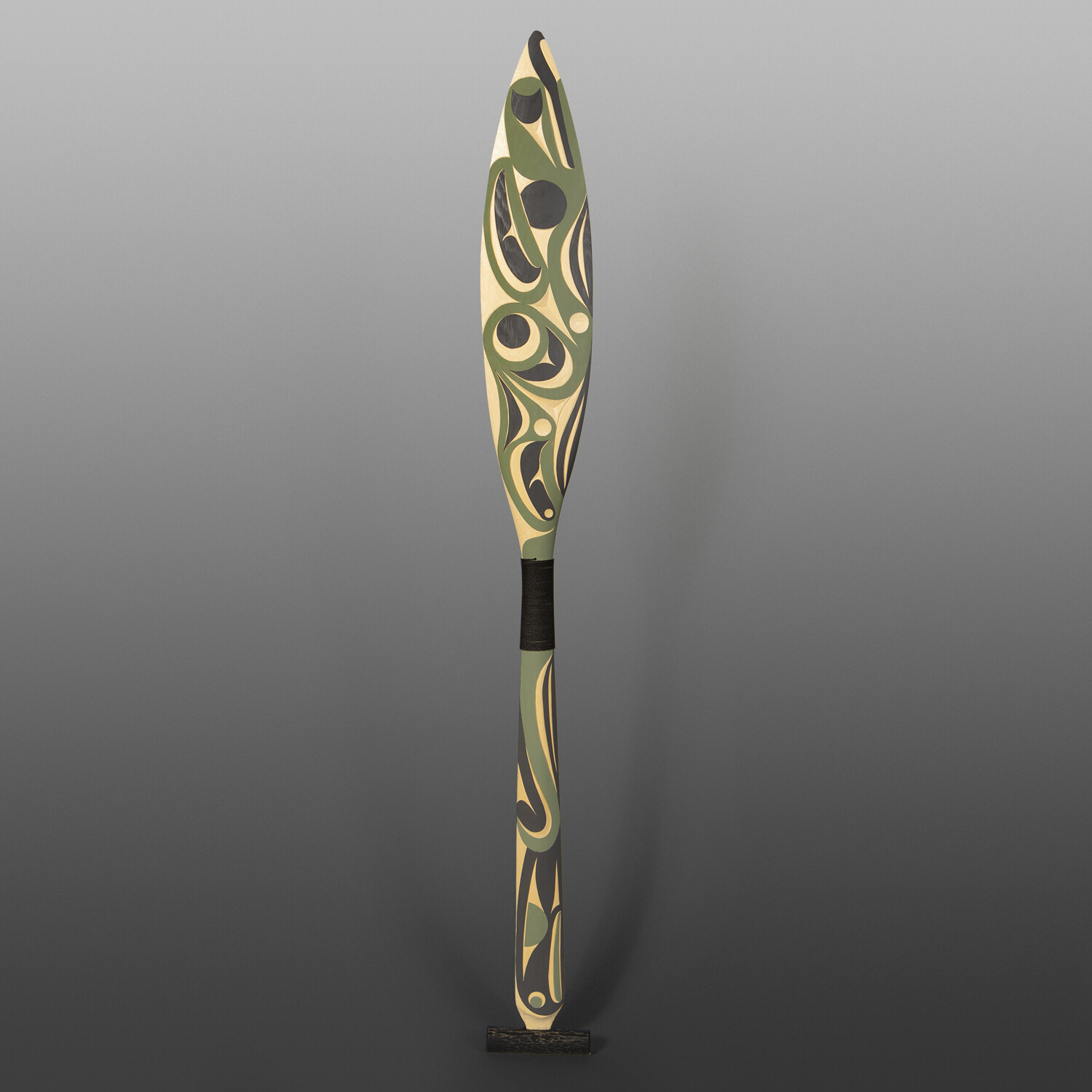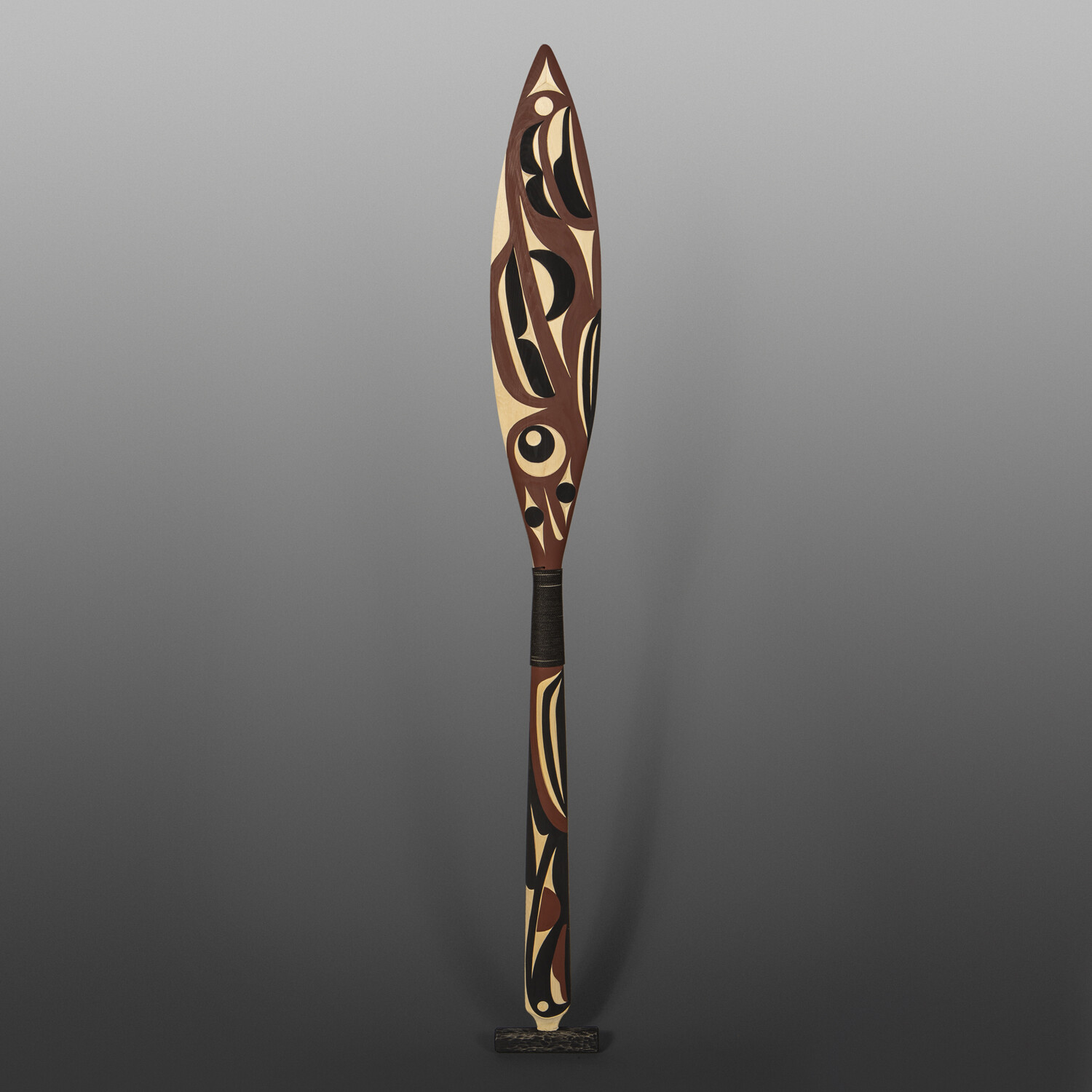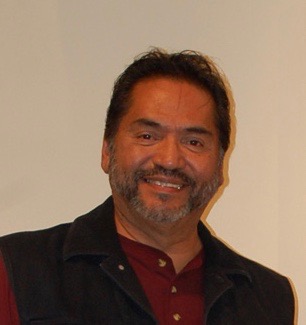 Andy Peterson
Andy Peterson
Coast Salish
Andy was born in Shelton, Washington and is a member of the Skokomish Tribe. He began carving after being inspired by a tour of a museum exhibiting Pacific Northwest Coast Art at a very young age. Immediately, he began to explore his artistic side and delve into various art forms. By the age of 18, he had taught himself how to both carve and paint.
Andy and his Uncle Peter Peterson made a joint effort to revive the traditional steam-bent box at Skokomish. His early designs were predominantly northern style, because that was the most accessible.
He later moved on to create designs based on the traditional Coast Salish style, thanks to sources at the University of Washington and University of British Columbia yielded examples on which he used as a basis for developing a traditional and exciting Coast Salish style. He also studied Salish art pieces made by his great grandfather Henry Allen.
In 1987 Andy worked with Makah artist Greg Colfax on a 12-foot female Welcome Figure for the Evergreen State College in Olympia, Washington. From 1994-1995 he worked with Steve Brown on a pole for Richmond Beach Park in Seattle. While working on the pole, Steve introduced Andy to many types of carving tools. He also taught him the art of tool making and silver carving. Andy now makes his own tools, which has broadened his palette and enhanced his carving career.
Andy continues to research and contribute to the revival of the Salish art. He has taught many people including his daughters, who are also well-known and respected Salish artists. He looks forward to working with his grandchildren in the future to keep the Salish art form alive.
Andy most enjoys working with wood and creates bentwood boxes and chests, panels, rattles, masks, bowls, totems, speaker staffs, and paddles as well as drums, button blankets and silver. His work can be found in private collections worldwide and in fine galleries along the Pacific Northwest Coast.

